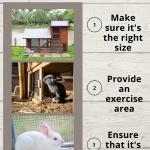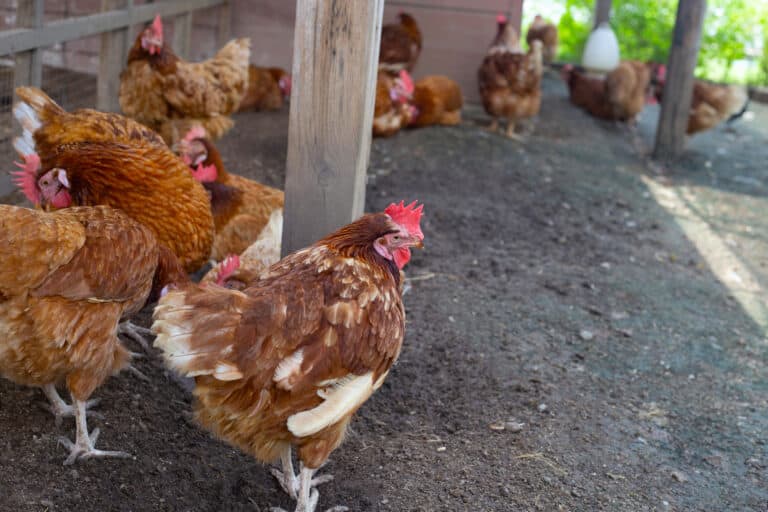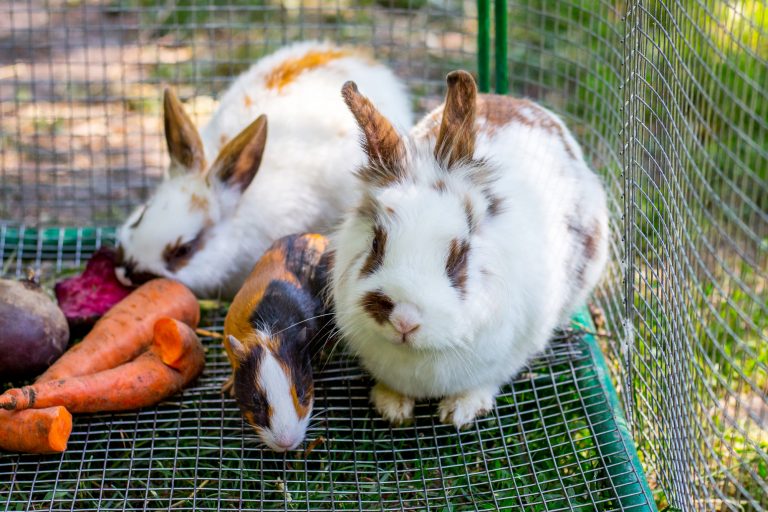Keeping Rabbits Safe with Outdoor Housing

Simply adorable, that’s what rabbits are. No wonder more and more people are getting them as pets. However, there’s more to owning these cuties than simply buying one from the nearest store or adopting one from a shelter. You’ll also have to determine if you have what it takes to meet their needs. For example, if you plan to keep your new pet outside, you should be able to provide safe rabbit housing outdoors for him or her.
Housing Your Rabbit Outdoors: Should You Do It?
Rabbits can thrive whether they live inside or outside your home. What’s more important is how you cater to their physical and behavioral needs.
Many rabbit parents claim that keeping your bunny indoors is safer for your fur baby. But sometimes, you have no choice but to place your pet outside. That’s quite alright, just as long as you take the necessary steps to keep him or her safe and happy. Moreover, housing your rabbit outdoors has the advantage of allowing your pet to live as close to their typical habitat as possible.
Essential Considerations for Outdoor Rabbit Housing
Rabbits are prey animals. As such, they’re programmed to avoid predators, so you need to keep that in mind when you plan your pet’s home, especially if you intend to keep your bunny outdoors. Their living space should also be large enough to allow them to run, dig, climb and play comfortably and happily. It should also be in a place that’s safe from predatory animals.
Here are the factors to consider in when creating your rabbit’s outdoor living area:
Make sure the size is right
Rabbits are active creatures. If they’re always inside their hutch or cage, they may develop skeletal issues. That’s why giving them plenty of exercise is important. Not only that, the size of their pen should allow them to stand fully upright on their hind legs and stretch out when they lie down. A size of around 6ft x 2ft x2ft works best for most rabbit breeds.
However, the cage should only be a place for your cute bunny to rest and hide. Don’t shut your rabbit inside the whole time, but instead, they should be able to move freely between their sleeping quarters and an exercise run.
Provide an exercise area
Exercise is vital for rabbits and is one of the foundations for ensuring their good health. That’s why your pet should be able to run and play whenever they want to.
Rabbits are most active during the early morning or early evening hours. As such, letting them out of their pens to exercise during daytime runs contrary to their body clock and instincts. Attaching an exercise run to their pen is one way of ensuring they’ll have plenty of opportunities to run around anytime it suits them.
Outdoor rabbit housing should be secure

Safety is a critical factor to consider when you plan your pet’s living space. Keep your rabbit safe from predators by constructing their enclosure with materials that can prevent animals who prey on rabbits from getting in.
Heavy gauge welded mesh works better than chicken wire, which predators like foxes and polecats can bite through. In gauging wire for thickness, the lower the number, the thicker the wire. We recommend you use a 16-gauge wire at the minimum. If you can go for a 12-gauge size, so much the better. Attach the wire firmly to the inside of the wood for better security,
When it comes to the size of the wire holes, 13 mm is perfect as it keeps out the smallest predators like the weasel. Commercially available enclosures usually come with 25 mm gaps, which only keep out the larger animals.
Use non-toxic materials
Rabbits love to chew, so they’ll likely chew on their hutches and exercise runs. To prevent accidentally poisoning your pet, make sure the wood used on their living area hasn’t been treated with chemicals toxic to rabbits. Modern paints are typically safer for them than older ones, but it’s better if you can prevent your bunny from nibbling on painted wood.
Choose an ideal location for your rabbit’s outdoor housing
A lawn is a great place to situate your rabbit’s living space as this gives your pet access to grass and other greenery. Grass is good for their digestive system. Romping and playing in a grassy area also keeps your rabbit busy. Because grass is soft and gentle on their feet, walking on it reduces the possibility of developing sore heels. Just make sure that the grass is free of chemicals that may be hazardous to your pet.
If you don’t have a lawn, don’t worry. Other areas around your home can also be ideal spots for your pet’s enclosure.
The important things to remember when building your outdoor rabbit housing are the following:
- Keep it out of direct sunlight. Install run covers or tarps to protect your pet from the elements
- Rabbits can dig their way out of runs on grass so take precautions like fitting wire-mesh skirts or placing slabs around the perimeter so your adventurous bunny can’t tunnel through
- Provide a digging pit because rabbits love to dig, and it’s part of their natural behavior

Keep harmful chemicals away from your pet’s housing area
Fertilizers, weed killers, insecticides, and other chemicals used in the garden are potentially deadly to rabbits. At the very least, they can make your bunny really sick. So keep those chemicals away from the area where you’ll place your outdoor rabbit housing.
Better yet, find non-toxic ways of maintaining your garden, such as using slug nematodes instead of poisonous slug pellets.
Equip your outdoor rabbit housing with the right bedding material
Think of a wild rabbit – they live in underground burrows where the temperature stays warm and cozy no matter the season. So you should aim for the same thing when you construct your pet’s outdoor home. Using the right bedding material will go a long way in accomplishing your goal.
Straw is better than hay because it’s warmer. Get soft, dust-free straw to avoid a dusty environment and to lower the risk of eye injuries to your pet.
How to Prepare a Rabbit Hutch

A good rabbit hutch is a critical component of your outdoor rabbit housing as this is the place where your precious bunny goes to sleep and spend some quiet time. That’s why it’s essential to make your pet’s pen as comfortable and inviting as can be.
Here’s how to make your rabbit hutch a safe and cozy haven that your bunny will love
- It should be large enough: The ideal size is 6 ft. long and 2 ft. wide, or with sufficient space for your rabbit to hop a few times across its length. Your pet should be able to stand on his hind legs without his head hitting the roof of the pen.
- The hutch shouldn’t be in direct sunlight: Rabbits are more sensitive to heat than cold temperatures. They suffer from stress and may even die of heatstroke when temperatures reach over 85 degrees Fahrenheit. So their pen must be in a shaded area. You can install shade covers or canopies to protect the cage from the hot sun. Alternatively, you can plant trees and shrubs to provide shade.
- Part of the flooring should be made of solid materials: Using wire floors works great for you as the poop can fall right through the gaps. But wires are hard on rabbit feet. Walking on wire floors puts uneven pressure on their footpads, which could lead to sore hocks, where your pet’s foot becomes raw and inflamed. There’s also the risk of predators biting your rabbit’s feet. You can still use wire floors but make sure that some portions of the hutch have solid flooring materials.
Constructing your outdoor rabbit housing with your pet’s safety and comfort in mind is one of the ways you can show your affection for your newest family member. It’s a labor of love where you’ll reap the rewards a hundredfold when you see a healthy and happy bunny in your care.








Hi Christine,
We have been looking online for plans to build a new outdoor rabbit hutch for our holland lops, Humphrey + Phoebe 🙂 We love this design of the bunny house above sitting next to the lake. Do you happy to have plans for this house or, know where we can buy one? We live in California. Thank you so much!
Best,
Abbie
Hi Abbie,
Isn’t that hutch nice?! It’s one of my favorites! I don’t have plans for it, but there are really similar ones here and then here too.
They are more secure than others with just a lower level, which doesn’t give the buns any place to go if they get frightened.
Hope that helps!
Christine